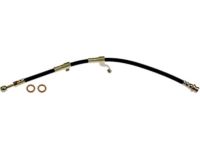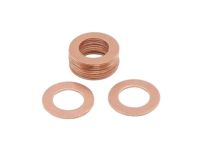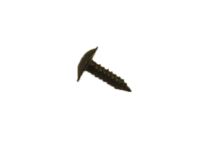This procedure applies to both front and rear brake discs. Begin by loosening the wheel lug nuts, raising the vehicle, and securely supporting it on jackstands. Remove the wheel(s) and, if working on the rear brake disc, release the parking brake. Next, remove the brake caliper and pads without disconnecting the brake hose to avoid the need for bleeding the brakes upon reassembly; suspend the caliper out of the way with a piece of wire. Inspect the disc surface for score marks and damage; while light scratches and shallow grooves are normal, deep scoring necessitates disc removal and refinishing by an automotive machine shop. Check both sides of the disc, as severe wear may require replacement. To check disc runout, place a dial indicator about 1/2-inch from the outer edge of the disc, set it to zero, and turn the disc; if the reading exceeds the maximum allowable runout limit, the disc should be machined or replaced. Regardless of the dial indicator reading, resurfacing the discs is recommended to ensure a smooth finish and flat surface, eliminating brake pedal pulsation. If not resurfacing, remove any glaze from the surface with emery cloth using a swirling motion. It is critical that the disc not be machined to a thickness below the specified minimum allowable thickness, which is cast into the inside of the disc and can be checked with a micrometer. For removal, take out the caliper mounting bracket bolts and, for rear discs, the Phillips head screws that hold the disc in place. Remove the lug nuts that were used to hold the disc, then take the disc off the hub, discarding any retaining clips on the wheel studs. For installation, position the disc over the wheel studs, install the mounting bracket, and tighten the bolts to the specified torque. Next, install the brake pads and caliper, tightening the caliper mounting bolts to the specified torque. Install the wheel, lower the vehicle, and tighten the lug nuts to the specified torque. Finally, pump the brake pedal a few times to bring the brake pads into contact with the disc, checking the operation of the brakes carefully before driving the vehicle.
Posted by KiaPartsNow Specialist 













